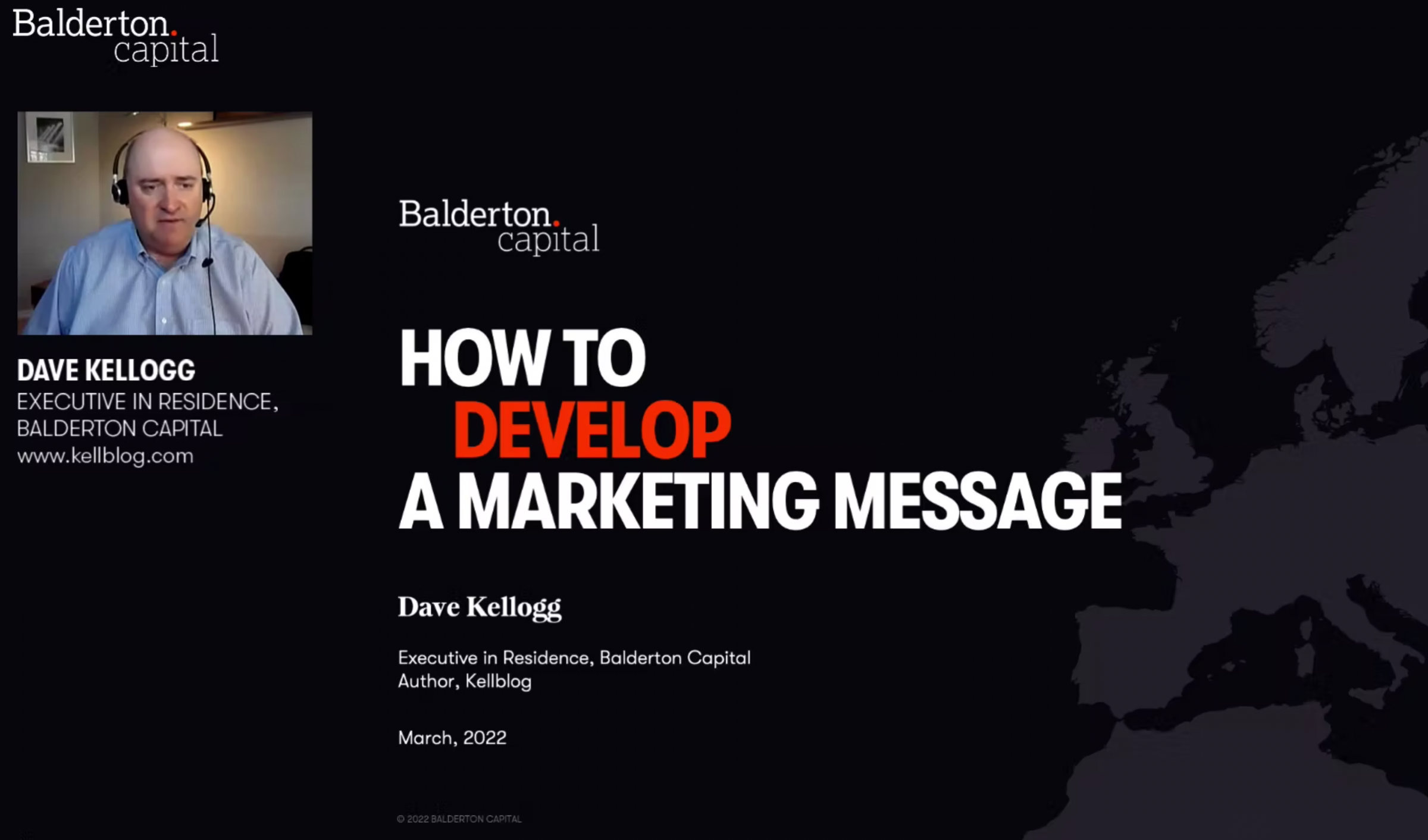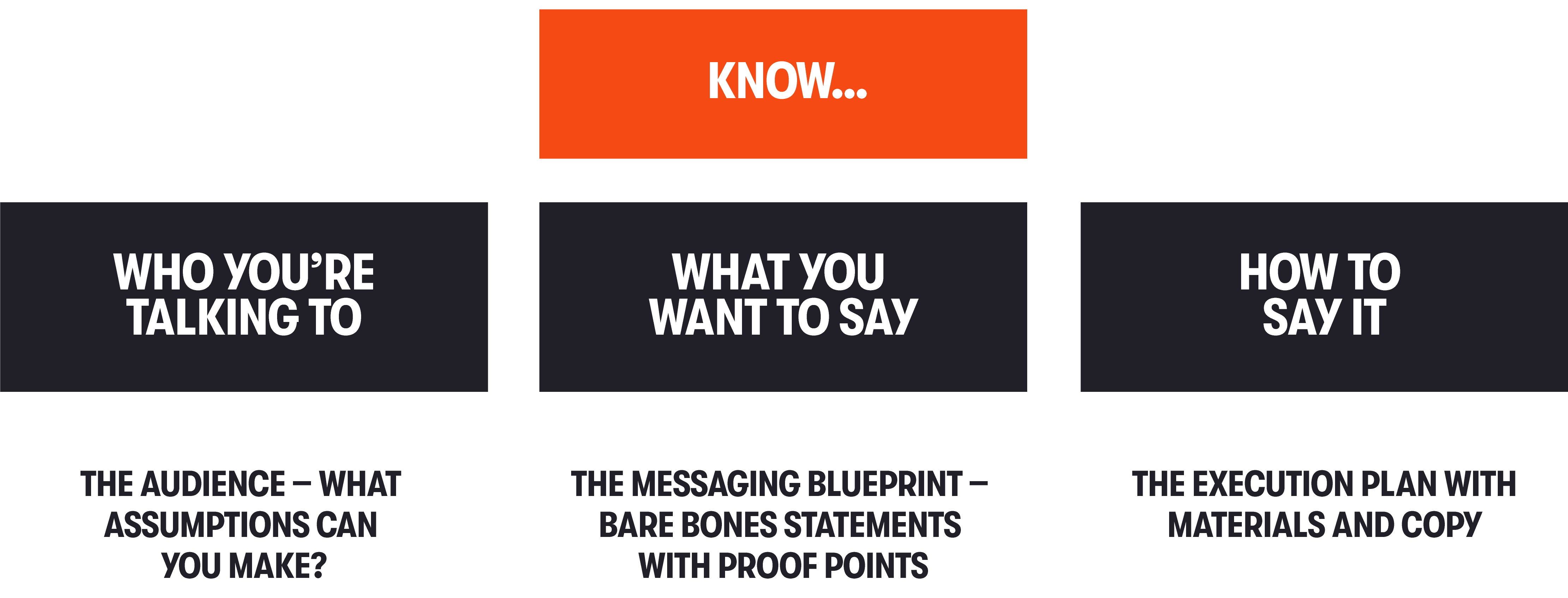Every marketing deliverable does not need to contain the answer to every question in the blueprint! That’s not the point. The point is to drive consistency across deliverables so that if you decide to discuss your positioning, vision, or benefits on your about-us page, in your boilerplate, and in your corporate presentation, that they are communicated the same way in each of those deliverables. You’d be shocked at how many companies fail this simple test, communicate inconsistently, and generate confusion as a result.
Making a messaging blueprint is hard work, both art and science.
The science comes from agonizing over the answers to each individual question and, when those answers are complex, structuring them as message trees, a 3x3 structure that allows you to capture nine points by grouping them into three groups of three.
The art comes from looking at the blueprint holistically, deciding what goes where, so that the individual answers all work together. For example, if your product is the fastest in the market is that 6 (positioning), 8 (differentiation), or 11 (vision)? In my experience, those questions are the hardest.









